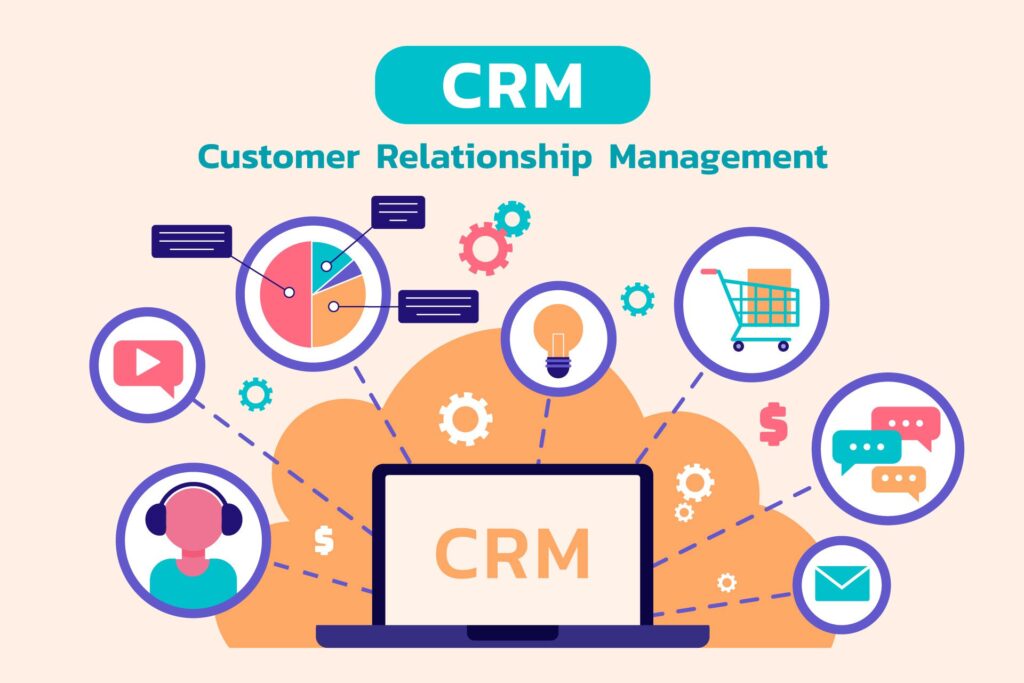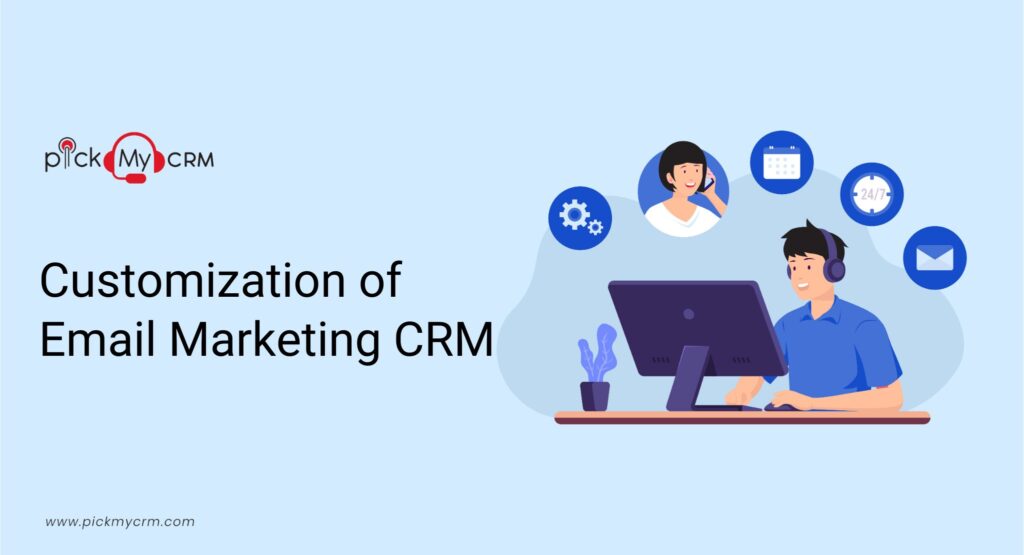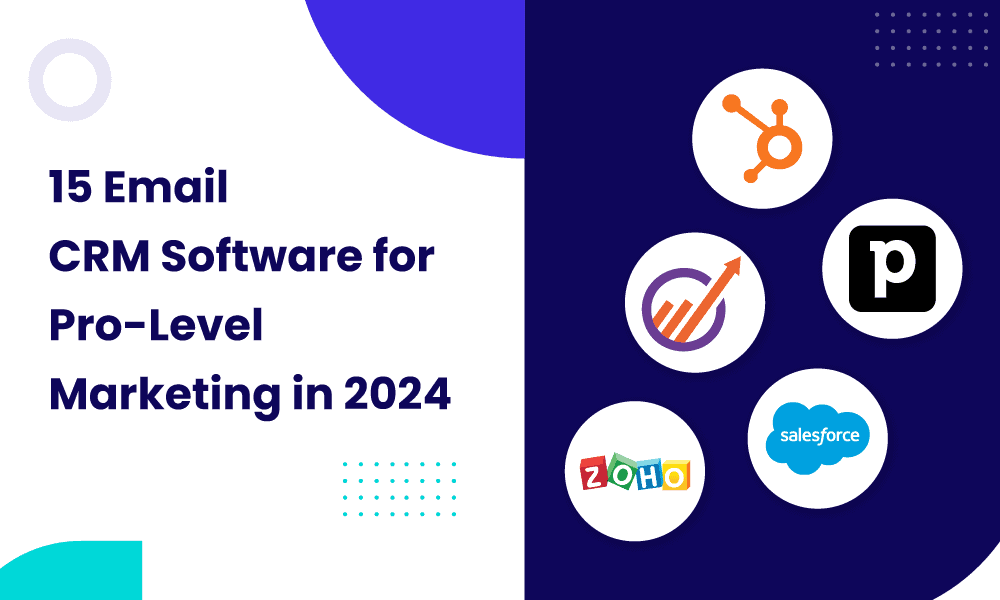
Unlocking the Power of CRM Marketing Newsletters
In the ever-evolving landscape of digital marketing, staying connected with your audience is paramount. And what better way to nurture those crucial customer relationships than through the power of CRM marketing newsletters? These carefully crafted emails are more than just updates; they’re opportunities to engage, inform, and ultimately, drive conversions. This comprehensive guide delves deep into the art and science of creating CRM marketing newsletters that captivate your subscribers and deliver tangible results.
What is CRM Marketing and Why is it Important?
Before we dive into the specifics of newsletters, let’s establish a solid foundation. CRM, or Customer Relationship Management, is a strategy centered around building and maintaining strong relationships with your customers. It involves collecting and analyzing data about your customers’ interactions with your business, allowing you to personalize your marketing efforts and provide a more tailored experience. CRM marketing, therefore, leverages this data to target specific customer segments with relevant messages and offers.
The significance of CRM marketing cannot be overstated. Here’s why it’s a cornerstone of successful businesses:
- Enhanced Customer Segmentation: CRM systems allow you to divide your audience into distinct segments based on demographics, behavior, purchase history, and more. This enables you to send highly targeted newsletters that resonate with each group.
- Personalized Communication: CRM data empowers you to personalize your newsletters, addressing subscribers by name, recommending relevant products, and tailoring content to their specific interests.
- Improved Customer Retention: By consistently delivering valuable content and personalized offers, CRM newsletters foster customer loyalty and reduce churn.
- Increased Conversions: Targeted messaging and compelling calls-to-action in your newsletters can drive more clicks, leads, and sales.
- Data-Driven Insights: CRM systems provide valuable data on email performance, allowing you to track open rates, click-through rates, and conversions. This data informs your future newsletter strategies and helps you optimize your campaigns.
The Anatomy of a High-Performing CRM Marketing Newsletter
A successful CRM marketing newsletter isn’t just a collection of words and images; it’s a strategically designed communication that caters to your audience’s needs and goals. Here’s a breakdown of the key elements:
1. Compelling Subject Lines: The Gateway to Your Content
Your subject line is the first – and often only – impression you make. It’s the deciding factor in whether a subscriber opens your email or sends it straight to the trash. A great subject line should be:
- Intriguing: Spark curiosity and make subscribers want to learn more.
- Concise: Keep it short and to the point, especially for mobile users.
- Personalized: Include the subscriber’s name or reference their specific interests whenever possible.
- Action-Oriented: Use verbs that encourage clicks, such as “Discover,” “Get,” or “Learn.”
- Relevant: Accurately reflect the content of your newsletter. Avoid clickbait.
Examples of Effective Subject Lines:
- “[Name], Your Exclusive Offer Awaits!”
- “5 Tips to Boost Your Sales (From Our Experts)”
- “New Arrivals: Shop Our Latest Collection”
- “[Name], Don’t Miss Out on Our Webinar!”
2. Engaging Preheader Text: The Supporting Act
The preheader text, also known as the preview text, is the snippet of text that appears next to the subject line in the inbox. It’s your second chance to entice subscribers to open your email. Use it to:
- Provide context: Briefly summarize the content of your newsletter.
- Reinforce your subject line: Offer additional details to create intrigue.
- Include a call-to-action: Encourage subscribers to click and read more.
Example:
Subject Line: “[Name], Your Exclusive Offer Awaits!”
Preheader Text: “Get 20% off your next purchase and discover our newest products!”
3. Eye-Catching Design and Layout: The Visual Appeal
A visually appealing newsletter is more likely to capture attention and keep subscribers engaged. Consider these design principles:
- Clean and uncluttered design: Avoid overwhelming your subscribers with too much information.
- Mobile-friendly layout: Ensure your newsletter looks great on all devices.
- High-quality images and graphics: Use visuals that are relevant and visually appealing.
- Consistent branding: Maintain a consistent look and feel that aligns with your brand identity.
- Easy-to-read font and size: Choose a font that’s easy on the eyes and use a font size that’s comfortable to read.
- Strategic use of white space: Use white space to create visual separation and guide the reader’s eye.
4. Valuable Content: The Heart of Your Newsletter
The content of your newsletter is the most crucial element. It should provide value to your subscribers and align with their interests. Consider these content ideas:
- Educational articles: Share industry insights, tips, and how-to guides.
- Product updates and announcements: Highlight new products, features, and services.
- Exclusive offers and promotions: Offer discounts, special deals, and early access to sales.
- Customer success stories: Showcase how your products or services have helped other customers.
- Behind-the-scenes content: Give subscribers a glimpse into your company culture and values.
- Curated content: Share links to relevant articles, blog posts, and videos.
5. Clear and Concise Copywriting: The Art of Persuasion
Your copy should be clear, concise, and easy to understand. Avoid jargon and technical terms that your audience may not be familiar with. Use:
- Strong headlines and subheadings: Break up your content and make it easier to scan.
- Short paragraphs: Keep your paragraphs brief and to the point.
- Action-oriented language: Use verbs that encourage subscribers to take action.
- Compelling calls-to-action (CTAs): Tell subscribers exactly what you want them to do.
- Proofread your content: Ensure your newsletter is free of errors.
Examples of Strong CTAs:
- “Shop Now”
- “Learn More”
- “Get Started”
- “Download Your Free Guide”
- “Register Today”
6. Strategic Segmentation: Targeting the Right Audience
Segmentation is the process of dividing your audience into smaller groups based on shared characteristics. This allows you to send targeted newsletters that are more relevant to each segment. Consider these segmentation strategies:
- Demographics: Age, gender, location, income, etc.
- Behavior: Purchase history, website activity, email engagement, etc.
- Interests: Products viewed, content consumed, etc.
- Lifecycle stage: New customers, existing customers, inactive customers, etc.
7. Effective Calls-to-Action: Guiding Your Subscribers
Every newsletter should have a clear call-to-action (CTA) that tells subscribers what you want them to do. Your CTA should be:
- Specific: Tell subscribers exactly what you want them to do.
- Action-oriented: Use verbs that encourage clicks.
- Visually prominent: Make your CTA stand out from the rest of the content.
- Placed strategically: Include your CTA in multiple locations throughout your newsletter.
8. Mobile Optimization: Reaching Subscribers on the Go
With the majority of email opens occurring on mobile devices, it’s crucial to optimize your newsletters for mobile viewing. This includes:
- Responsive design: Ensure your newsletter adapts to different screen sizes.
- Large font sizes: Make your text easy to read on smaller screens.
- Thumb-friendly buttons: Make your CTAs easy to tap.
- Concise content: Keep your content brief and to the point.
9. Testing and Optimization: Continuously Improving Your Performance
Testing and optimization are essential for improving the performance of your CRM marketing newsletters. This includes:
- A/B testing: Test different subject lines, content, designs, and CTAs to see what performs best.
- Analyzing your results: Track your open rates, click-through rates, and conversions to identify areas for improvement.
- Making data-driven decisions: Use your data to inform your future newsletter strategies.
Crafting Your CRM Marketing Newsletter: Step-by-Step Guide
Now that we’ve covered the essential elements, let’s walk through the process of creating a successful CRM marketing newsletter.
Step 1: Define Your Goals and Objectives
Before you start writing, determine what you want to achieve with your newsletter. Do you want to:
- Increase sales?
- Generate leads?
- Build brand awareness?
- Improve customer retention?
Your goals will guide your content and messaging.
Step 2: Identify Your Target Audience
Who are you trying to reach? Create customer personas to understand their needs, interests, and pain points. This will help you tailor your content to resonate with them.
Step 3: Choose a Newsletter Platform
Select a CRM platform or email marketing service that meets your needs. Popular options include:
- Mailchimp
- HubSpot
- ActiveCampaign
- Sendinblue
- Constant Contact
These platforms offer features like email templates, segmentation, automation, and analytics.
Step 4: Design Your Newsletter Template
Choose a template that aligns with your brand and is easy to customize. Ensure your template is mobile-friendly and visually appealing.
Step 5: Write Your Content
Craft compelling content that provides value to your subscribers. Focus on their needs and interests. Use a clear and concise writing style.
Step 6: Include a Clear Call-to-Action
Tell subscribers exactly what you want them to do. Make your CTA visually prominent and action-oriented.
Step 7: Segment Your Audience
Divide your audience into segments based on their demographics, behavior, and interests. This allows you to send targeted newsletters.
Step 8: Test and Optimize
Before sending your newsletter, test it on different devices and email clients. Track your results and make adjustments as needed. A/B test different elements to see what performs best.
Step 9: Send and Track Your Results
Send your newsletter to your subscribers. Track your open rates, click-through rates, and conversions. Use this data to improve your future campaigns.
Leveraging CRM Data for Personalized Newsletters
One of the most significant advantages of CRM marketing newsletters is the ability to personalize your content. CRM systems provide a wealth of data that allows you to tailor your messages to individual subscribers. Here’s how to leverage this data effectively:
- Personalized Subject Lines: Use the subscriber’s name in the subject line to grab their attention.
- Dynamic Content: Display content that’s relevant to the subscriber’s interests or purchase history.
- Product Recommendations: Recommend products based on the subscriber’s past purchases or browsing behavior.
- Behavior-Based Triggers: Send automated emails based on the subscriber’s actions, such as abandoned cart emails or welcome emails.
- Segmentation Based on Engagement: Segment your audience based on their engagement with your previous emails. This allows you to send more targeted and relevant content.
Examples of Effective CRM Marketing Newsletters
Let’s look at some examples of CRM marketing newsletters that demonstrate best practices:
Example 1: E-commerce Newsletter
Subject: “[Name], Your Exclusive Summer Sale is Here!”
Content:
- A visually appealing banner showcasing the sale.
- A brief description of the sale, including the discount percentage and duration.
- Featured product recommendations based on the subscriber’s past purchases.
- A clear call-to-action: “Shop the Sale Now!”
Example 2: SaaS Newsletter
Subject: “[Name], Discover the Latest Features in [Product Name]”
Content:
- An introduction to the new features.
- Step-by-step guides on how to use the new features.
- Customer success stories showcasing how other users are benefiting from the new features.
- A call-to-action: “Learn More” or “Try the New Features”
Example 3: Blog Newsletter
Subject: “[Name], New on the Blog: [Blog Post Title]”
Content:
- A brief summary of the blog post.
- A visually appealing image related to the blog post.
- A call-to-action: “Read the Full Post”
- Links to other relevant blog posts.
Avoiding Common Mistakes in CRM Marketing Newsletters
While CRM marketing newsletters offer significant benefits, it’s easy to make mistakes that can undermine your efforts. Here are some common pitfalls to avoid:
- Sending irrelevant content: Always tailor your content to your audience’s interests and needs.
- Sending too many emails: Avoid overwhelming your subscribers with frequent emails.
- Using generic subject lines: Personalize your subject lines to grab attention.
- Neglecting mobile optimization: Ensure your newsletters are mobile-friendly.
- Ignoring analytics: Track your results and make data-driven decisions.
- Not providing a clear call-to-action: Tell subscribers exactly what you want them to do.
- Poor design and layout: Use a clean and visually appealing design.
- Sending emails without permission: Always obtain consent before sending marketing emails.
Measuring the Success of Your CRM Marketing Newsletters
To ensure your CRM marketing newsletters are effective, it’s crucial to track and measure your results. Key metrics to monitor include:
- Open Rate: The percentage of subscribers who open your email.
- Click-Through Rate (CTR): The percentage of subscribers who click on a link in your email.
- Conversion Rate: The percentage of subscribers who complete a desired action, such as making a purchase or filling out a form.
- Unsubscribe Rate: The percentage of subscribers who unsubscribe from your email list.
- Bounce Rate: The percentage of emails that are not delivered.
- Revenue per Email: The revenue generated from each email sent.
By regularly monitoring these metrics, you can identify areas for improvement and optimize your campaigns for better performance.
The Future of CRM Marketing Newsletters
The landscape of CRM marketing is constantly evolving. Here are some trends to watch:
- Artificial Intelligence (AI): AI can be used to personalize content, optimize send times, and automate email marketing tasks.
- Interactive Content: Interactive elements, such as quizzes and polls, can increase engagement and provide valuable insights.
- Video Marketing: Including videos in your newsletters can capture attention and convey your message more effectively.
- Hyper-Personalization: Using data to create highly personalized experiences for individual subscribers.
- Focus on Value: Providing valuable content and experiences will become even more important in the future.
Conclusion: Mastering the Art of CRM Marketing Newsletters
CRM marketing newsletters are a powerful tool for building customer relationships, driving conversions, and growing your business. By understanding the key elements, following best practices, and continuously optimizing your campaigns, you can create newsletters that resonate with your audience and deliver exceptional results. Remember to prioritize valuable content, personalized messaging, and a clear call-to-action. Embrace the latest trends and technologies to stay ahead of the curve and make sure your CRM marketing efforts are continuously improving. By doing so, you can transform your email marketing into a powerful engine for business growth. Building a solid foundation through CRM data, and then leveraging that data to create highly targeted, personalized newsletters, is the key to unlocking the full potential of your CRM marketing strategy. With a commitment to continuous improvement and a focus on providing value, you can build lasting relationships with your customers and achieve remarkable results.


